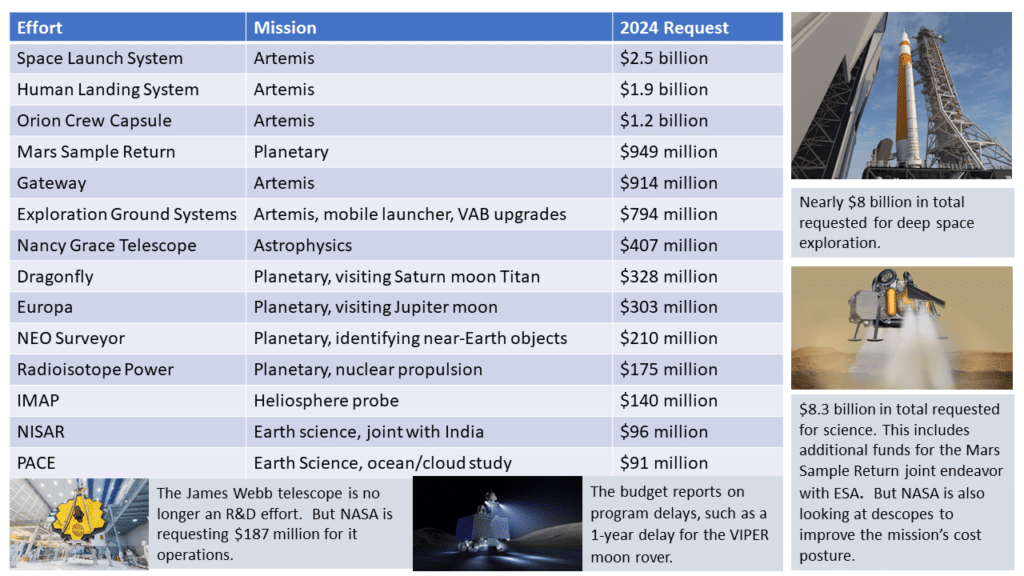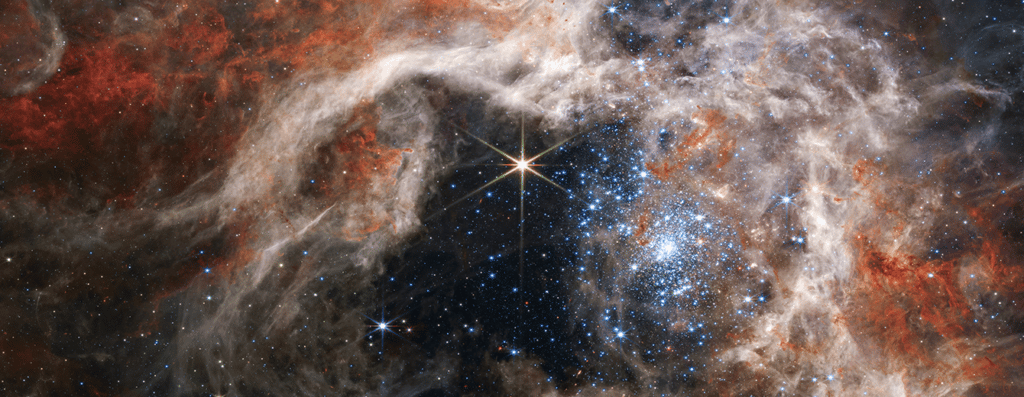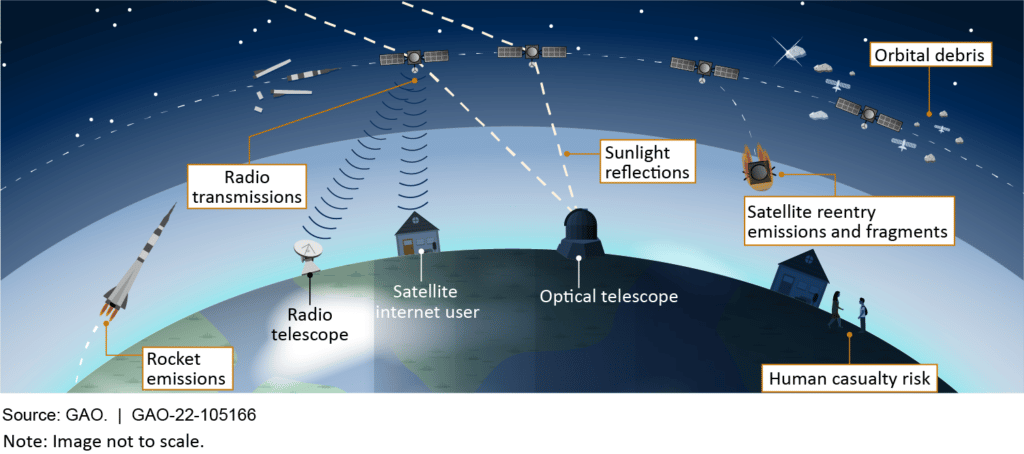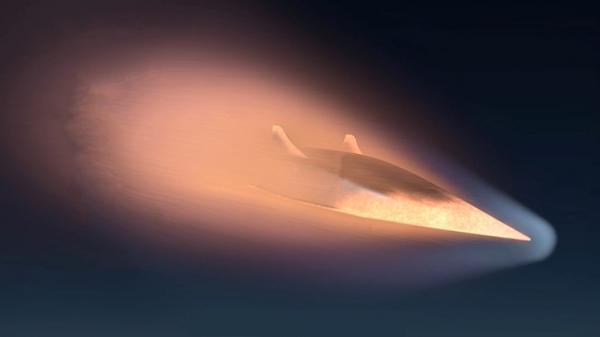NASA is proposing a $27 billion budget for next fiscal year, nearly $2 billion more than what was enacted for fiscal year 2023. Deep space exploration and the Artemis programs command nearly $8 billion of the budget and science programs command about $8.3 billion. The programs requesting the largest amounts of funding include the major Artemis-related efforts, such as the Space Launch System and the Human Landing System and Planetary missions such as Mars Sample Return and the Jupiter moon explorer, Europa. While this is a significant increase, NASA is still finding itself prioritizing missions in light of cost increases and resource constraints.

One of the most significant upcoming science missions is the Mars Sample Return joint endeavor between NASA and the European Space Agency, estimated to launch in 2028. Preliminary costs range from $3.4 billion to $4.9 billion, but NASA reports in its budget submission that it is still looking at potential descopes to lower costs.

A new Venus exploration project known as VERITAS was delayed by 3 years in order to shift resources–including workforce–to other projects such as Mars Sample Return; Psyche, an asteroid mission whose launch was delayed last year because of technical difficulties; and the $2.5 billion Europa mission, which NASA says needs additional funding due to significant COVID impacts and to accommodate increased estimates for operations. VERITAS will map the surface of Venus to determine its geologic history and understand why it developed so different than Earth. NASA also proposes a 2-year delay of the NEO Surveyor mission to support these missions. NEO Surveyor will detect and assess near earth objectives. NASA has been slow to move on the project despite pressures from Congress and others.
Additional sources of NASA’s budget data and analyses:
- Full NASA budget request for fy 2024 nasa_fy_2024_cj_v2.pdf
- NASA Requests Funding for ExoMars While Warning MSR Costs May Grow – SpacePolicyOnline.com
- NASA ISS Deorbit Space Tug Could Cost $1 Billion – SpacePolicyOnline.com
- NASA’s 2024 budget proposal is pretty good,… | The Planetary Society
- NASA weighing continuing VERITAS versus future Discovery mission – SpaceNews






